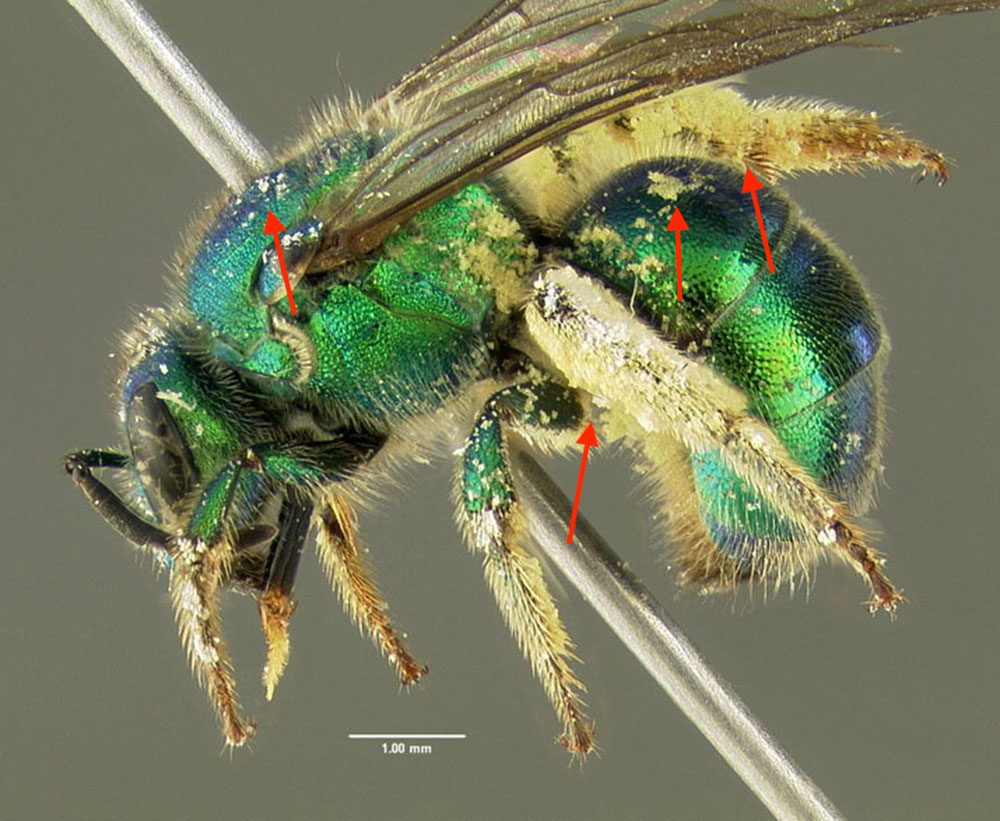Pollination is the transfer of pollen from an anther (male part of a plant) to the stigma (female part of a plant). Pollination leads to the production of fruits and seeds and is therefore critical to plant reproduction including many foods that we eat everyday.
Bees are very important pollinators. Bees collect pollen and nectar for themselves and their offspring. In the process of visiting different plants bees transfer the pollen from one plant to another. This process often results in bees having pollen attached to various parts of their body.

Often we get pollination information by sitting and watching plants to see what insects visit it. However, this is time-consuming and it is impossible to know that you have seen all the visitors to that plant, or that you have seen all the plants that any species will visit. One way to get this information is to look at museum specimens. Often when insects are collected they contain pollen on them from the most recent plant they visited. If we can examine many individuals we can start to get a picture of the whole community of plants each species visits.
The BigBee project would like to know more about what plants the bees have recently visited. That is why we are asking you to tell us if we see pollen on the bees in the photos. We know that this pollen might be hard to see, so we just ask that you try your best. The goal is to use the same images for label transcription, bee measurements and now pollen detection. With your help, this expedition will help us determine if that is possible!
Please give PollinLater a try and let us know what you think.

No responses yet